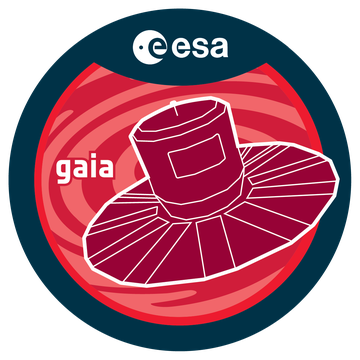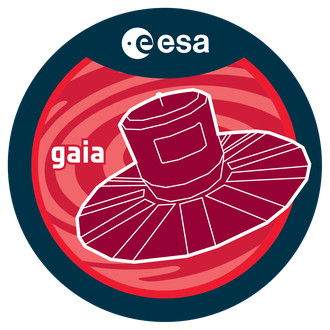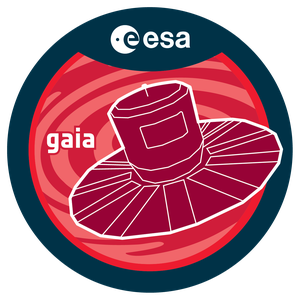New Gaia focus release on 10 October 2023
The European Space Agency’s (ESA) Gaia space observatory will release new and expanded data on 10 October 2023, bringing findings that go far beyond what Gaia was initially designed for. The data will contain five special data collections, including half a million new sources in Omega Centauri, one of the most massive globular clusters in the Milky Way.
The Gaia Focused Product Release (FPR) adds five data products to the third data catalogue of the Gaia mission. These include astrometry and photometry from engineering images taken in the Omega Centauri region, the first results of quasars’ environment analysis for the search of gravitational lenses, extended radial velocity data for variable stars with long periods, stacked spectra for studying the diffuse interstellar medium and updated astrometry for solar system objects. The new release will be available from 12 am on 10 October 2023 at the AIP Gaia archive (https://gaia.aip.de) and the other Gaia partner centres.
ESA’s Gaia space mission creates the most accurate map of the Milky Way by measuring positions, distances, space motions and physical parameters of the stars in our galaxy. The analysis of the data is carried out by a specially created software pipeline and is the task of the Data Processing and Analysis Consortium (DPAC). The Leibniz Institute for Astrophysics Potsdam (AIP) has been involved in DPAC since 2007 and makes all Gaia data catalogues published to date available to the worldwide community. For the new release, the AIP is contributing data from over 500,000 new stars in the giant globular cluster Omega Centauri.
The DPAC consortium will present the release on 10 October in public live streams and local events all over Europe in different languages, see https://www.cosmos.esa.int/web/gaia/fpr-events.
Programme for the ESA Gaia Focused Product Release Event
15:00 CEST – 17:00 CEST
Organized by the European Space Astronomy Centre
Livestream: https://www.youtube.com/@esacesalive4291/streams (open to all)
Science presentations:
The Gaia mission (Timo Prusti)
Astrometry and photometry from engineering images taken in the omega Centauri region (Katja Weingrill)
Diffuse interstellar bands from aggregated RVS spectra (Mathias Schultheis)
Radial velocity time series for Long-Period Variables (Michele Trabucchi)
First results from quasars’ environment analysis for gravitational lens search (Christine Ducourant)
Updated astrometry for Solar System Objects (François Mignard)
The European Space Agency’s (ESA) Gaia space observatory will release new and expanded data on 10 October 2023, bringing findings that go far beyond what Gaia was initially designed for. The data will contain five special data collections, including half a million new sources in Omega Centauri, one of the most massive globular clusters in the Milky Way.
The Gaia Focused Product Release (FPR) adds five data products to the third data catalogue of the Gaia mission. These include astrometry and photometry from engineering images taken in the Omega Centauri region, the first results of quasars’ environment analysis for the search of gravitational lenses, extended radial velocity data for variable stars with long periods, stacked spectra for studying the diffuse interstellar medium and updated astrometry for solar system objects. The new release will be available from 12 am on 10 October 2023 at the AIP Gaia archive (https://gaia.aip.de) and the other Gaia partner centres.
ESA’s Gaia space mission creates the most accurate map of the Milky Way by measuring positions, distances, space motions and physical parameters of the stars in our galaxy. The analysis of the data is carried out by a specially created software pipeline and is the task of the Data Processing and Analysis Consortium (DPAC). The Leibniz Institute for Astrophysics Potsdam (AIP) has been involved in DPAC since 2007 and makes all Gaia data catalogues published to date available to the worldwide community. For the new release, the AIP is contributing data from over 500,000 new stars in the giant globular cluster Omega Centauri.
The DPAC consortium will present the release on 10 October in public live streams and local events all over Europe in different languages, see https://www.cosmos.esa.int/web/gaia/fpr-events.
Programme for the ESA Gaia Focused Product Release Event
15:00 CEST – 17:00 CEST
Organized by the European Space Astronomy Centre
Livestream: https://www.youtube.com/@esacesalive4291/streams (open to all)
Science presentations:
The Gaia mission (Timo Prusti)
Astrometry and photometry from engineering images taken in the omega Centauri region (Katja Weingrill)
Diffuse interstellar bands from aggregated RVS spectra (Mathias Schultheis)
Radial velocity time series for Long-Period Variables (Michele Trabucchi)
First results from quasars’ environment analysis for gravitational lens search (Christine Ducourant)
Updated astrometry for Solar System Objects (François Mignard)
Images
Big screen size [1000 x 1000, 330 KB]
Original size [1241 x 1241, 150 KB]





